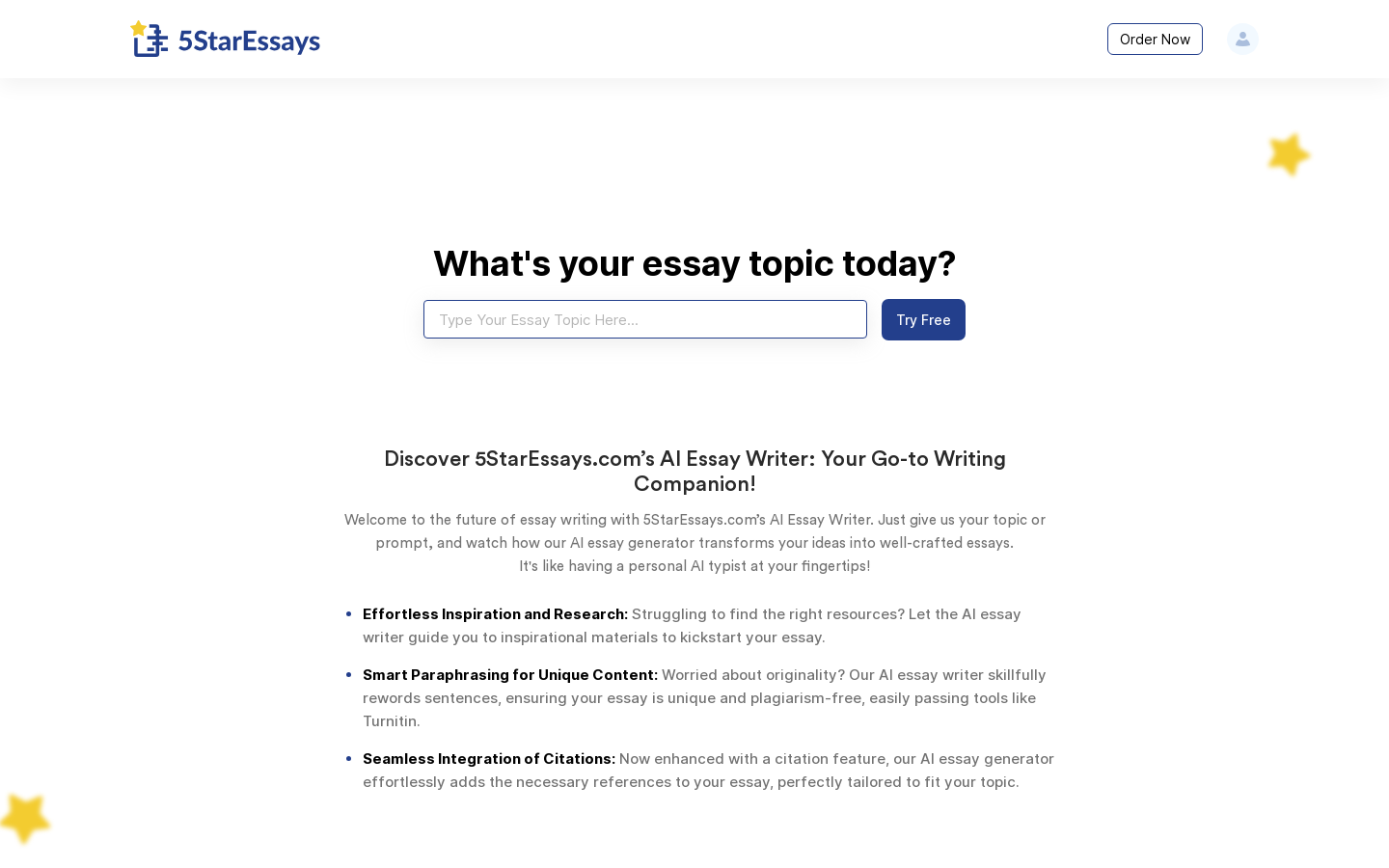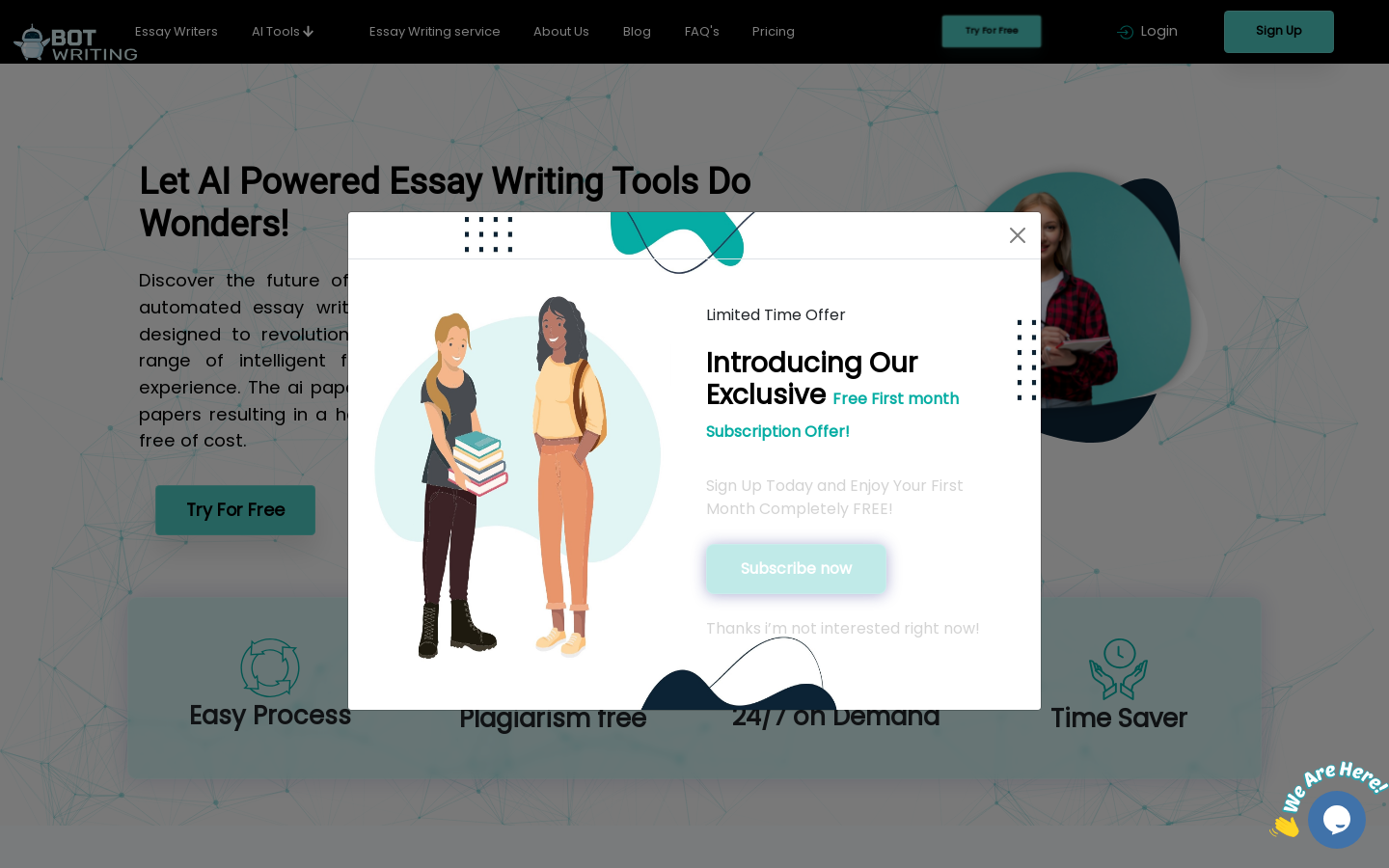Service information
Plans
free
Platforms
Description
EssayService.Ai is a free online service that generates well-structured and coherent essays that meet academic standards. With no signup required, users can easily enter their essay topic, length, academic level, and instructions to receive a customized essay based on their unique requirements and preferences. The hassle-free essay generation process allows users to make any necessary edits and download their high-quality essay. With a diverse range of subjects and academic levels catered to, EssayService.Ai is a valuable tool for boosting your essay writing game.
Features
- It's a free AI essay writer
- It provides customized essays based on your needs
- It covers a wide range of subjects and academic levels
- It offers an effortless essay writing process in just 3 steps
- It has an intelligent grammar and style checker
Use cases
- It can help you write essays
- It can generate essay ideas for you
- It can help you improve your writing skills
- It can provide real-time suggestions for ideas and research materials
- It ensures your privacy and security
Perfect for
- It's useful for students
- It's great for individuals looking to improve their writing skills
- Professionals can also benefit from it
Share this page:



